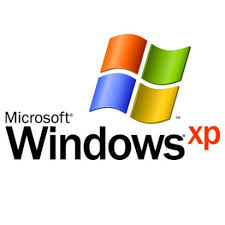Backing up data is very important to keep your data protected. Having all your files stored in one location means they are vulnerable to being lost if an accident were to happen. It is recommended, therefore, to have at least two copies of your files to ensure you won't lose any data.
If you are using Windows XP, you have a small backup utility already included in the operating system. While not as full-featured as some of the advanced software, it is free and simple to use. It can do the job easily enough, especially if you have simple files, such as digital photos or documents, that you need to backup.
To use the Windows XP backup utility, you use the following steps:
If you are using Windows XP, you have a small backup utility already included in the operating system. While not as full-featured as some of the advanced software, it is free and simple to use. It can do the job easily enough, especially if you have simple files, such as digital photos or documents, that you need to backup.
To use the Windows XP backup utility, you use the following steps:
- Click "Start->All Programs->Accessories->System Tools->Backup" to open the backup utility. The Backup or Restore Wizard starts, unless you have disabled it. If it doesn't start, click "Tools->Backup Wizard" from the menu.
- Click the "Next" button.
- In the "What do you want to do?" window, click "Back up files and settings", and then click "Next".
- You can how choose what to back up. You have several options:
- My documents and settings. This setting backs up the files in your "My Documents" folder and preserves your data files, including e-mail messages and address books. Your personal settings will also be saved as well. I recommend choosing this option if you are new to backing up data, or the second option if there is more than one user of the computer.
- Everyone's documents and settings. If there is more than one user for your computer, this option will backup all users' files and settings, which is similar to the first option.
- All information on this computer. This is the largest backup option as it backs up everything on your computer, which you may not want if space is limited.
- Let me choose what to back up. With this option you can choose what you want to backup. If you are unsure about backing up your data, don't choose this option.
- Once you have chosen what to backup, you will need to choose where to store your backup. Under "Choose a place to save your backup", you can specify where to store your files. Some options are:
- Local hard disk. This is not the best location as you would like to save your data in an external location away from your computer. If you want, you can use it as a temporary location and then copy it later.
- External hard disk. These hard disk drives are not expensive and can be purchased anywhere. They have a lot of disk storage space, so you shouldn't have a problem with save your backups here. This is a good location to store your backed up data.
- A network share. If you have access to server, such as at work, then this is a good option for your. Chances are the servers already have a good backup process in place, so you data will be even safer. For home use, not too many people would have shared network drives, unless they have a second system.
- USB flash drive. These small little drives are becoming larger to the point where they make good alternatives to backing up your data. While external hard drives give you more storage space for your buck, they aren't as portable as a USB flash drive.
- After choosing a location for your backup, you simply enter a descriptive name for the backup file. You simply click "Next" on the final page and then "Finish" to start backing up your data.


0 comments
Post a Comment